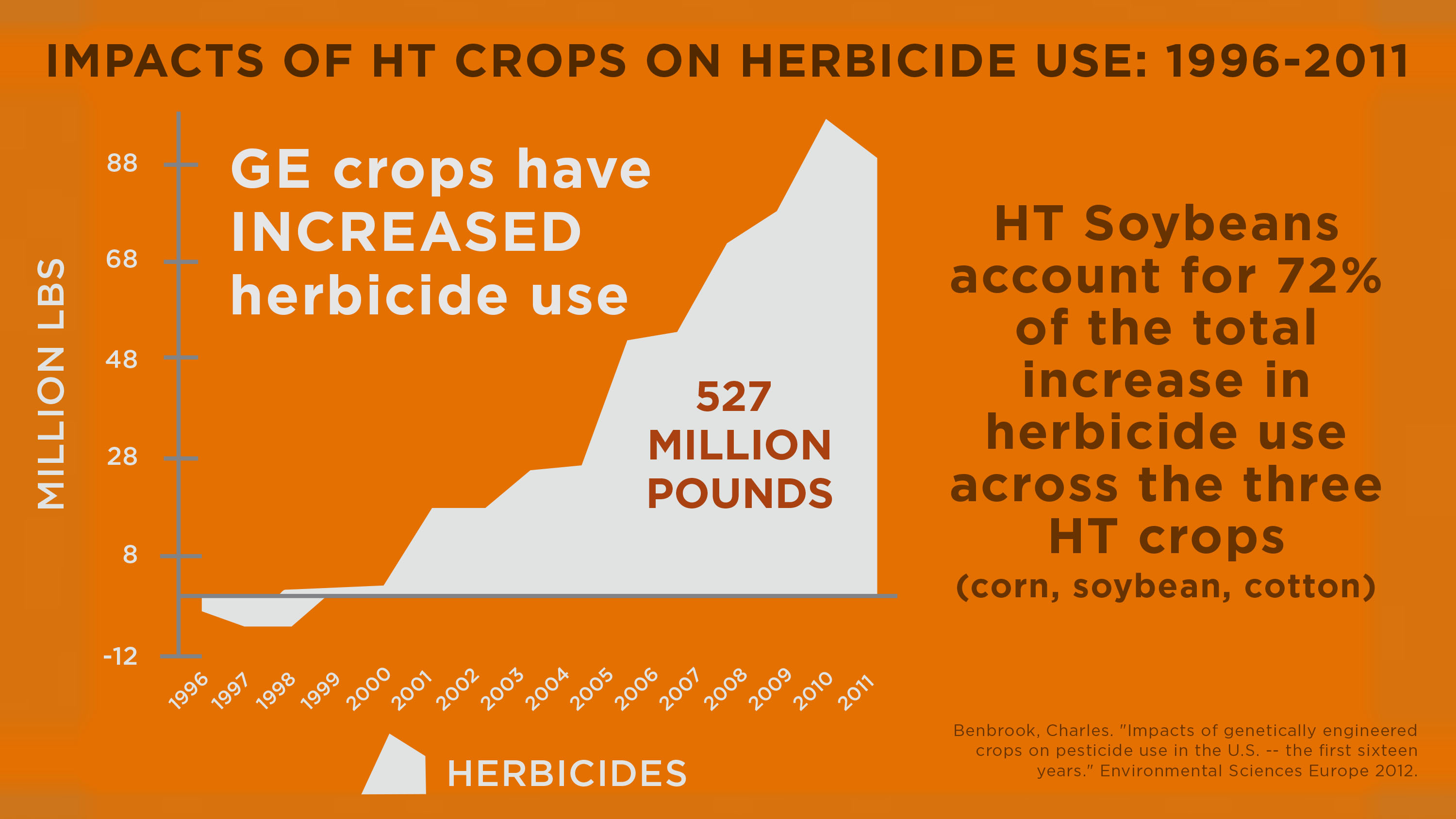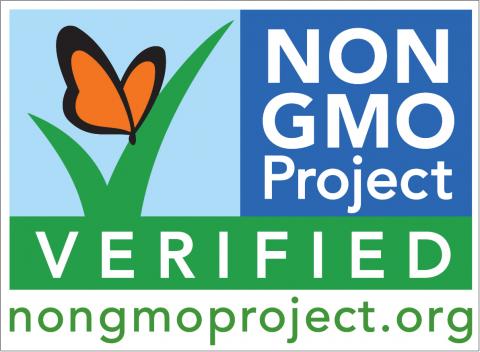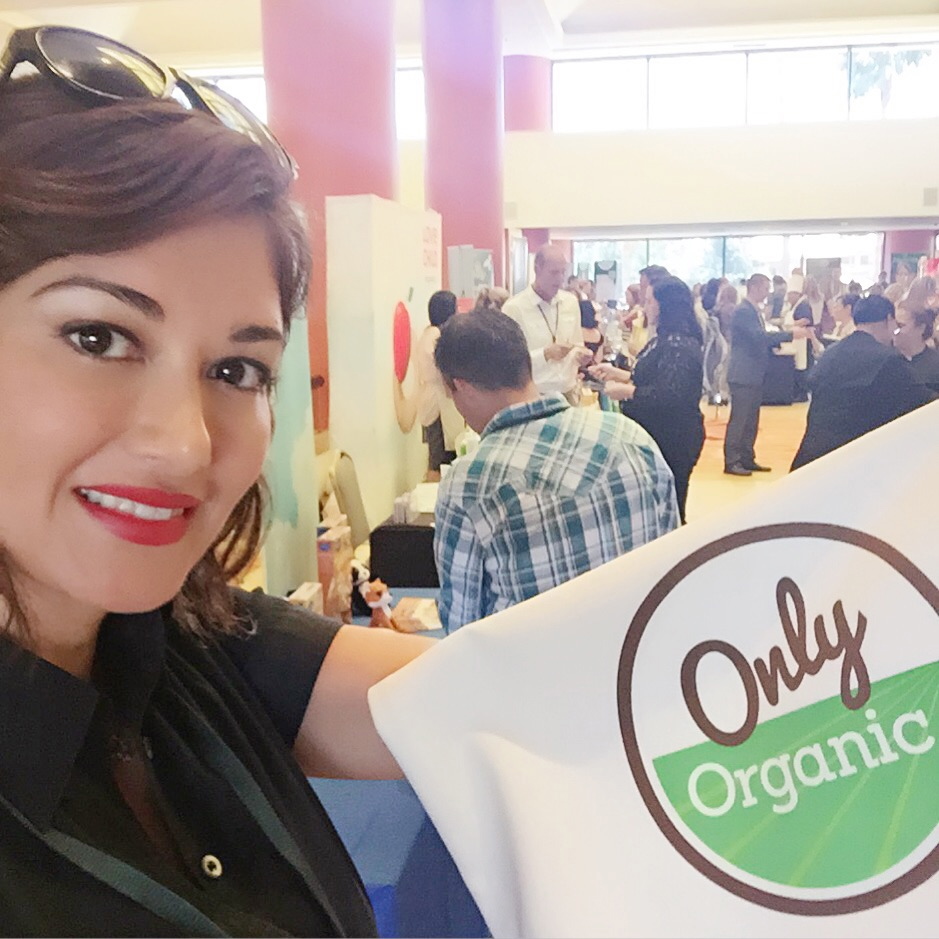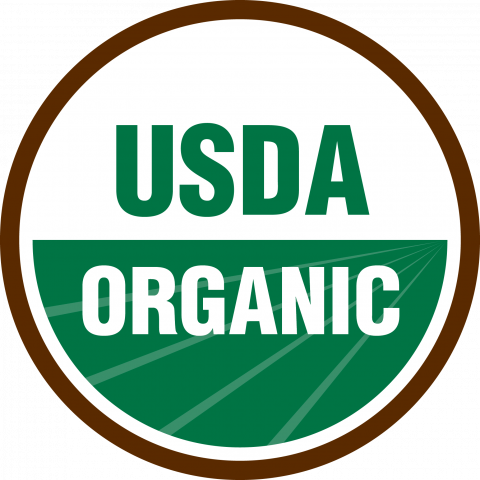We’ve all heard rumblings about genetically modified organisms or GMOs but there is so much information out there on both sides that it’s easy to tune out. Being a food blogger, I come into contact with information on food issues more often than most so I thought I would share, in a nutshell, what I’ve learned about GMO ingredients and why I try to avoid them at home and in my recipes. Now I know this is not a fun or sexy topic but it’s GMO awareness month so let’s bite the bullet and take a look.
First a quick intro- GMOs are living organisms whose genetic material has been manipulated in a lab to create combinations of plant, animal, bacteria and/or viral genes that don’t occur in nature. Almost all commercial GMO crops are engineered to withstand direct application of herbicide and/or to produce an insecticide. The companies that sell these genetically modified seeds also sell the herbicide that can be sprayed on them in large amounts without killing them. The most common of these herbicides is called “Round-up” and the crops are touted as being “Round-up ready”. These crops can be sprayed with an amount of herbicide that would kill non-gmo crops. The main ingredient in Round-up is glyphosate. The UN’s public health arm, the World Health Organization recently labeled glyphosate as “probably carcinogenic to humans”.
Why you should care:
1. There is probably glyphosate in your pee: One German study found that every participant was found to have high levels of glyphosate in their urine; but, of course, any one study can be discounted. What I found interesting is that even in this review of several studies which concludes that “The expected internal exposure was clearly below the worst-case predictions” and “The conclusion can be drawn that no health concern was revealed”. It’s still listing measurements of glyphosate in a significant percentage of samples! The author concludes that it’s fine because they are below the “acceptable daily intake (ADI)”. Well what is the acceptable amount of a probable carcinogen in your pee? Um, how about zero? I’d prefer zero. How about you?
Unfortunately, this may be currently out of or reach since urine concentrations measured in the US appear higher than those found in Europe likely thanks to the “differences in the agricultural use of glyphosate- based herbicides and the plantation of glypho- sate-resistant, genetically modified crops in North America.” In other words thanks to the proliferation of GMO crops in the US. The good news is those who reported eating a “mainly organic diet” were shown to have less than half the amount of glyphosate concentrations as those eating a conventional diet.
2. Super-weeds are no joke- While giant attacking weeds may seem like something out of a campy apocalypse movie, it’s a very real thing. The use of herbicides has increased 15 times since GMOs were introduced, so it’s not surprising that it’s led to the emergence of aggressive super-weeds which can grow to more than six feet tall and can sharply reduce crop yields. These plants have become resistant to the “weed-killer” Roundup, as well as other common herbicides. They have spread to more than 12 million acres in key agricultural areas in the U.S. Southeast and Midwest. So what is the chemical industry’s answer this threat? How about some lovely 2,4-D with your corn? “What is 2,4-D?” you may ask. Oh just the principal ingredient in Agent Orange, used during the Vietnam War, not to worry. Of course, the chemical industry maintains that 2,4-D is safe at current usage levels, but if these resistant weeds were created by over-use of herbicide, can the answer to the problem really be an even stronger and potentially more toxic herbicide? What next?
3. China and Russia require GMO labeling- So why in the world don’t we? I mean, these aren’t exactly governments known as bastions of consumer protection and transparency. No one would be surprised to know that European Union countries became the first to embrace labeling for genetically modified food way back in 1998, but Saudi Arabia? Venezuela? China?! It kind of makes you feel like the U.S. is going backwards when it comes to consumer rights. How can this be? Well one place to look is at the total spent on donations and lobbying by companies like Monsanto for clues.
4. The freaking bees are dying for goodness sake- Similar to the 15 fold increase in herbicide use since GMOs were introduced, we are also now using 15x more neonicotinoid insecticides in the US than we used to. These are the insecticides that have been a Harvard University study concluded “are highly likely to be responsible for triggering ‘colony collapse disorder’ in honeybee hives that were healthy prior to the arrival of winter”. While there may be multiple causes for the alarming decline of bee populations, we now know that these insecticides are one of, if not the, main culprits and are routinely (though not exclusively) used on GMO crops.
5. Chemical companies produce nearly 100% of GMO pesticides, plants and seeds- Syngenta, Bayer, Dow, Monsanto, and DuPont control the world market on these products. These are not farmers, these are chemical companies and like any good chemical company they want to sell more chemicals. They’ve made money on things like napalm, agent orange and chlorofluorocarbons. They’re not in the business of making good healthy food, they’re in the business of selling more pesticides and herbicides and the plants and seeds that can withstand them.
What you can do about it:
If you’re like me and you’ve made it this far you may be ready to cry a glyphosate tainted river into the nearest glass of red wine. There are however a lot of steps you can take to avoid genetically modified foods. These steps not only support your personal health, but also help support a food system that is less dependent on GMOs.
1.Know which crops are most likely to be contaminated- This lets you know what ingredients to look out for. These are approximate numbers as of 2013
- Alfalfa 3%
- Canola 93%
- Corn 88%
- Cotton 90%
- Papaya 75% (most of Hawaiian crop)
- Soy 94%
- Sugar Beets 5%
- Yellow straightneck and Crookneck Squash 11%
- Zucchini 11%
2.Eat Less Processed Food- As you can see the list of GMO crops is actually pretty short. The problem is that when it comes to processes food is that between corn, soy, canola and sugar from sugar beets, they are in almost everything. Eating whole foods means you know exactly what you are putting into your body. The only high-risk foods in the produce dept. are corn, Hawaiian papaya, zucchini, yellow summer squash and edamame (soy). Oh and you might not think of cotton as a problem, but there is one place we tend to stuff cotton internally ladies, so it’s probably best to go with organic tampons as well. I mean who wants Glyphosate in their vagina? Gross.
3.Look for the butterfly-
 The Non-GMO Project is a non-profit organization which test and verifies products to be “non-GMO”. This does allow for trace amounts of contaminated ingredients up to .9% since it is virtually impossible to completely eliminate GMOs from high-risk products.
The Non-GMO Project is a non-profit organization which test and verifies products to be “non-GMO”. This does allow for trace amounts of contaminated ingredients up to .9% since it is virtually impossible to completely eliminate GMOs from high-risk products.
The USDA National Organic Standards prohibit the use of GMOs. There may still be traces of cross-contamination, but organic producers cannot knowingly use GMO ingredients. You can also be sure that organic produce is not treated with the nasty herbicides and pesticides listed above.
4.Support GMO labeling- Sign petitions, call your congress people and generally raise hell until we get this done. Find out more on the Just Label It! website.
5.Help stop “The Dark Act”- There is a bill which has already passed the house (HR1599) and will be heading to the senate soon which would block state laws requiring mandatory GMO labeling. It would set up a system much like the USDA organic certification which would put the financial and paperwork burden on companies that are trying to make things the natural way. This certification process would likely take years to implement. This bill tramples on both consumer and states rights. Click here to email congress to say you oppose the DARK Act.
Ok that’s enough on the tough stuff for now, so got out there, get informed, use your voice and vote with your dollars. I promise my next post will be filled nothing but kale, kombucha, baby kittens and rainbows. xJacq

At the “eco-blogger” conference Shiftcon last month learning about GMOs and organics.


it’s scary to me that we take for granted that everyone in the US is as knowledgable about GMOs as we would like them to be. Education is key!
I know! It was like pulling my own teeth to get myself to write this, but it is so important!
Wow! USA doesn’t require GMO labelling? That sounds just so irresponsible. Seems like the government doesn’t actually care about the health of the population.
Unfortunately with our campaign finance laws here, corporations can donate limitless amounts of money to the politicians who are supposed to be regulating their industries, so often policy decisions go against public will. It’s a big problem here that has gotten worse since our supreme court decision called “Citizen United”. Hopefully we can change things soon.
Edifying, but terrifying, too. Perfect for Halowe’en. Now I know that candy corn is bad for me! Sadly, I really like zucchini.
d.
You’re right, I definitely should have made this halloween themed! Trader Joes usually has some good prices on organic zucchini. I grew it for the first time this summer which was fun and pretty easy.
This is so interesting! I learnt something new today, thanks 🙂
Except…
GMO’s don’t have animal genes in them. You can’t mix fish genes with a tomato to get a desired result. Also, the protein created in GMO corn is toxic to a specific bug (the European Corn Borer), but is harmless to humans.
Also, genetic modification has happened for centuries through selective breeding, hybridization, etc. No one is making a big deal out of those. But god forbid we perfect the science to isolate the desired genes from one plant type and replace an undesirable trait in another form of the same plant type.
Here’s a few links:
http://agsci.psu.edu/magazine/articles/2015/spring-summer/the-science-of-gmos
http://www.scientificamerican.com/article/why-people-oppose-gmos-even-though-science-says-they-are-safe/
http://1.bp.blogspot.com/-FFFjXDpHPAo/U-DENhhkAaI/AAAAAAAAFgo/bRPXrXJd1Bk/s1600/GMtable3.jpg (<— note, this one shows all forms of what is considered Genetic Modification in science)
http://www.businessinsider.com/foods-before-genetic-modification-2015-8
https://gmoanswers.com/studies/5-sustainable-farming-practices-GMO
And here's a few farmers who you can reach out to in order to learn about GMO production and what they actually do:
http://www.thefarmersdaughterusa.com/
http://www.nurselovesfarmer.com/
http://www.petersonfarmbros.com/index2.php#!/HOME
http://thefarmerslife.com/
http://www.askthefarmers.com/
GMO's are actually a good thing, as they reduce the usage of pesticides & herbicides, reduce the effects of tilling the soil (some farmer's can actually utilize no-till thanks to GMO technology, in fact…check out the Peterson Farm Bros for evidence), amongst other positives.
Also, the organic pesticides that are allowed are more toxic than Roundup. Here's a great article on the toxicity of the approved organic pesticides: http://www.crediblehulk.org/index.php/2015/06/02/glyphosate-toxicity-looking-past-the-hyperbole-and-sorting-through-the-facts-by-credible-hulk/.
Chemicals are not something to be afraid of. I mean, everyone who drinks the chemical called dihydrogen monoxide (that's water, for those of you who have forgotten your 2nd grade science lessons) eventually dies.
"Probably carcinogenic to humans"…want to know what else is "probably carcinogenic to humans"? COFFEE. In that category, though, there is a limited evidence to fully prove a link. Alcohol is a class one carcinogen, meaning there's a direct link between it and cancer…yet you mention red wine without stating it's carcinogenic effects.
I was giving a brief description of GMOs. While not in commercial use, there are examples of organisms, both plant and animal, that have been modified with genetic material from animals. Bt corn has genetic material from a bacteria. That is not the same as selective breeding since you could not cross-breed a bacteria and a plant. http://science.nationalgeographic.com/science/article/food-how-altered.html
While insecticide use has decreased , herbicide use has increased substantially. Overall pesticide use in 2011 was about 20% higher on each acre planted to a GE crop, compared to pesticide use on acres not planted to GE crops. http://cahnrs.wsu.edu/news-release/2012/10/01/summary-of-major-findings-and-definitions-of-important-terms/
If you have no problem eating glyphosate, that is completely your prerogative. I am not asking anyone to be “afraid of chemicals”, since that would be asking them to be afraid of everything! I simply support transparency. I believe we should have labeling, as do most other developed countries, so people can make their own decisions.
Pingback: How about Monsanto? – clancularian